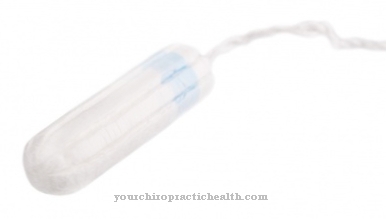Cold-warm compresses are special compresses that can both cool and warm painful body parts. They contain a material with a high heat storage capacity, which can maintain a previously set temperature for a long time. The cold or warm treatment enables a faster healing process.
What is a cold-warm compress?

Cold-warm compresses are a special form of compresses that have a cooling or warming effect on the parts of the body to be treated. In doing so, they significantly influence the healing process of inflamed, injured and painful areas of the body.
Compresses are generally wound dressings made of gauze or non-woven fabric. This also includes folded towels, bandages and pads that are used to protect the wound site or to stop bleeding. Ointments can also be applied to the wound using compresses.
However, cold-warm compresses are a special type of compress. They are bags that contain a gel with a large heat capacity. Cooled gel only heats up very slowly, while heated gel only cools down slowly. This property is used for cooling or heating affected body parts. Cold-warm compresses thus offer quick help with bruises, sprains, back pain or joint pain.
Shapes, types & types
The structure of the cold-warm compresses is very simple. They are bags that contain a gel with a heat-retaining active ingredient inside. The bags are also made of either polyamide or polyethylene films, which seal off the gel well from the environment. Thus, the cold-warm compresses can be used again and again. They are commercially available in various sizes and shapes. The principle of operation and action is the same for all cold-warm compresses.
In addition to the cold-warm compresses, there are both exclusive cold compresses as well as compresses that generate heat (heat patches). These compresses work on a different principle and can only be used once.
Structure & functionality
The classic cold-warm compresses are bags with a gel-like substance that must first be warmed or cooled down before being applied to the painful part of the body. The heated or cooled compress is then placed on the affected area, where it unfolds its beneficial effect.
The main ingredient in the gel is a colorless liquid that has the chemical name propylene glycol. Propylene glycol is also found in many ointments as a humectant. It is non-toxic in small quantities and is also contained in classic compresses together with cellulose as a humectant, in food colors and in preservatives. Polypropylene glycol has a freezing point of -68 degrees Celsius and a vapor point of 188 degrees Celsius. Within this temperature range, this solvent is liquid and its temperature only very slowly adjusts to the external temperature values.
Before using the cold-warm compresses, they are either cooled down in the freezer or in the freezer for two hours at a temperature of up to -25 degrees or heated in a water bath for about 8 minutes at a temperature of approx. 80 degrees. The cooled or warmed compress can then be placed on the affected area. Since the gel does not change chemically, the cold-warm compress can be used again and again and thus adapted to the intended use.
In contrast, pure cold compresses or heat patches are only used once. Unique cold compresses contain ammonium nitrate in the plastic cover and water in the packet. After compressing the compress, the plastic cover bursts and ammonium nitrate dissolves in water while cooling down strongly. Heat patches in turn contain the active ingredient capsaicin, which triggers local, heat-generating metabolic processes on contact with the skin.
Medical & health benefits
Cold-warm compresses help quickly with bruises, sprains, swellings and severe pain. Its main quality is relieving pain. The real healing must then be carried out by the body itself.
Everyone has to try out for themselves whether heat treatment or cold treatment helps better. There is a rule according to which acute pain should be cooled and chronic pain should be warmed. But sometimes the opposite is also the case.
Cold or heat changes the speed of the metabolic processes in the area to be treated. When exposed to cold, physical processes slow down. This also reduces the activity of active ingredients that promote inflammation. The pain intensity decreases as a result. Cold has proven to be particularly effective in injuries to muscles, ligaments and joints, after operations or when the joints show signs of wear and tear. Cold treatments have also proven effective for abscesses, as this reduces bacterial activity.
Depending on the extent of the pain, the cold applications can be limited locally and regionally or distributed over the entire body. The skin, subcutaneous tissue and joints are reached. The effectiveness also depends on the length and frequency of use. However, cold application should not be carried out in the case of circulatory disorders, open injuries, diseases of the coronary arteries or hypersensitivity to cold.
With a heat treatment, the metabolic processes in the body are accelerated. A faster immune response means that pain-triggering messenger substances can be removed more quickly. In this case, the pain responses are reduced.
Heat is particularly helpful with chronic signs of wear and tear and inflammation of the joints. The skin, connective tissue and joints are also reached during the heat treatment. However, in the case of acute inflammatory joint diseases, acute infections, abscesses, cardiovascular diseases or heat intolerance, heat treatment should be avoided. In these cases, the acceleration of the metabolic processes could make the underlying disease worse.
























.jpg)


